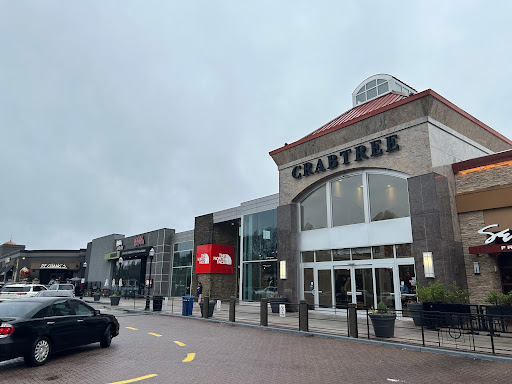The American shopping mall has been a staple of society for decades and has gone through many changes during its existence.
Malls are indoor shopping centers consisting of various stores and activities. They exploded in popularity amongst the teenage demographic in the 1980’s and 90’s. In the early 2000’s, mall attendance declined due to factors like online shopping.
Today, many are concerned about the death of the mall and the end of in-person shopping, but there may be little reason to worry. Teenagers and young adults today seem to appreciate malls just like their parents did when they were young.
Teenagers in Raleigh often visit Crabtree Valley Mall. This mall was built in 1972 and has stood the test of time, presenting a counterargument to those who believe that malls no longer have anything to offer.
The Creation of the American Shopping Mall
An architect named Victor Gruen created the idea of the shopping mall. He built the first mall in 1956 in Edina, Minnesota, called the Southdale Centre. Gruen envisioned the mall to be a center where the community could come together and share cultures, and people could have easy access to various amenities.
Gruen’s vision was quickly successful. Malls popped up all over the country during the 60s and 70s. According to Business Insider, in 1975, shopping complexes made up about 33% of retail sales. By the mid-1980s, this number rose to 52%.
Crabtree Valley Mall had been open for over a decade at this point and was a gathering place for people of all ages. Teenagers went to shop or work, to get piercings or family portraits.
During this time, Crabtree housed stores like Belk, Sears, and Thalhimers. Thalhimers was especially popular during the holiday season because of its Snow Bear character, who passed out stickers to visitors. Crabtree also had a two-story tall fountain in its center, which attracted many guests.
Crabtree was renovated in 1985 and removed the fountain but added several more stores and a food court. The food court had popular 80s restaurants like Piccadilly Cafeteria and Taco Viva. However, it also had a Burger King, which Leesville students still go to for lunch today.
Crabtree was then renovated again in 1993. The food court was expanded and Sears moved to a new building next to the original mall. The old space was filled by a Belk Men’s store and some smaller businesses. Thalhimers was bought out by the Hecht Company, which later became Macy’s, and also expanded into the old Sears location.
Trisha Jones, a shopper at Belk in Crabtree Valley Mall, grew up going to the mall during its peak. “The big function for the weekend was being able to be dropped off at the mall and being able to get something to eat… I was raised in Syracuse, New York and we had a huge mall called Carousel Mall, it was like six floors and it was just the best place to go for a while,” said Jones.
Fans of “Stranger Things” may remember the show’s Starcourt Mall setting. The show encapsulated the teenage mall experience in the 80s, showing the characters at the movies, shopping, and simply hanging out at the mall.
The Decline of the American Shopping Mall
The mall’s popularity continued through the 90s, but in the early 2000s, decades-old malls became worn-down.
Teenagers lost the desire to gather at the mall on the weekends, and big-box stores like Walmart challenged mall department stores like Macy’s and Sears. Despite the decrease in public interest, companies continued to build malls until the mid 2010s, which caused competition in the market and ultimately decreased profits for all malls.
Additionally, online shopping took hold during the 2000s. People stopped going to stores because they could order what they wanted from the comfort of their own homes. Amazon gained traction and revolutionized the online shopping industry.
“I think people learned other ways of getting what they want,” said Jones. “It’s a little more hassle getting in and out of a mall than running over to a Target or ordering online. I like to go in person maybe once a month, but most of the time I have a running cart at Amazon.”
In 2008, America experienced an economic recession, resulting in many businesses shutting down. Customers had less money to spend, so they visited malls less frequently.
Sears, a department store anchor in Crabtree Valley Mall, filed for bankruptcy in 2018. The space where Sears used to be sometimes houses a Spirit Halloween store, but most of the year it just lies empty.
Many other department stores closed down across the country, including JC Penney in 2020. With the disappearance of these stores, malls attracted fewer guests, which led to smaller stores closing. In Crabtree, some of these empty spaces were filled by local businesses, but other malls were not so lucky.
In March of 2020, all public places shut down due to the pandemic. This decrease in in-person shopping killed many businesses. People who shopped at Crabtree during this time experienced a stunning hollowness because there were hardly any visitors. Tennants barred the entrances to their stores and the food court was sectioned off with caution tape. Malls across the country were demolished because they simply could not pay the bills, but fortunately, Crabtree Valley Mall remained open.
Teens in Malls Today
In its almost 70 years of existence, the shopping mall has certainly had its ups and downs, but how do teenagers experience malls today?
Trisha Jones believes teenagers are less interested in malls today than in the ‘80s. “I don’t see as many [teenagers] as when I was growing up… I have teenagers now, and they really don’t ask to go to the mall very much,” said Jones.
In contradiction with Jones’ observations, teenagers today seem to enjoy visiting their local malls. According to a CNBC article on a commercial real estate firm CBRE study, around 81% of Generation Z prefer shopping in person.
Natalie Vargas Kitchens, sophomore, said, “[I go to the mall] once or twice a month… I prefer the mall. It gives me something to do.”
According to data from Coresight Research, the number of visits to indoor malls in the US increased from 2022 to 2023. Mall sales grew nationally by about 11% in 2022 and occupancy rates went back to pre-pandemic levels.
“I think lots of people like to go to the mall, lots of teenagers,” said Vargas Kitchens.
Lisa Hensen, another shopper at Belk, feels like teens don’t go to the mall for the same reasons as teens in the 80s and 90s. “I feel like when I was a teenager, teenagers actually went to just hang out at the mall. They went to the movies and walked around. I don’t know that they do that as much now … They just go to shop now it seems like,” said Hensen.
However, Avery Pedersen, sophomore, does go to the mall just to pass the time. “Sometimes my friends and I will just wander and get food. I think it’s just fun to go. Even window shopping is fun. It’s not super structured, you can kind of do whatever,” said Pedersen.
When asked if she thought the mall was dying, Pedersen said, “I think a little bit. Especially because of COVID, everybody shops online now. We still haven’t revived the mall, but I think it’s somewhat coming back.”
The American shopping mall is certainly no longer the utopia that it used to be. However, the mall is not dead yet. People who were teens in the 80s and people who are teens today both enjoy the mall. It seems that this part of American culture still has more years left in its life.


Leave a Reply